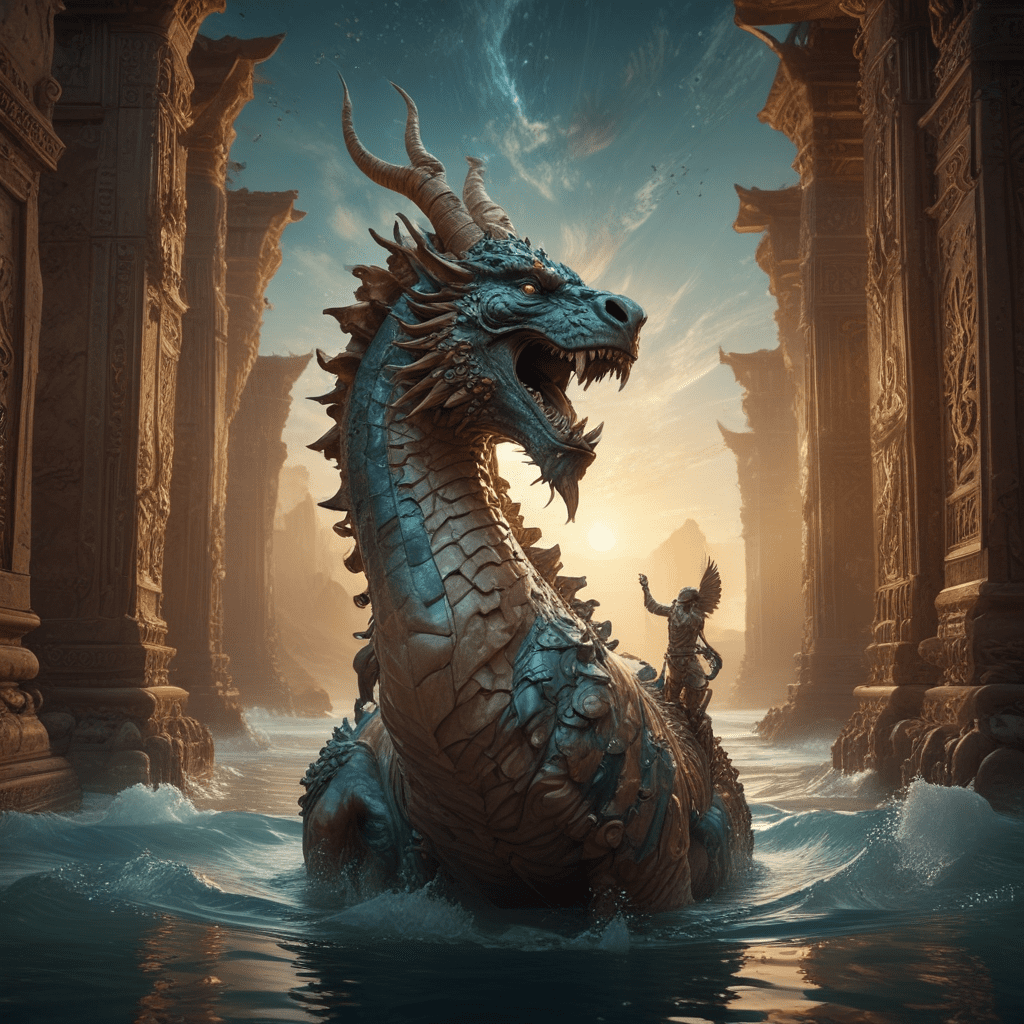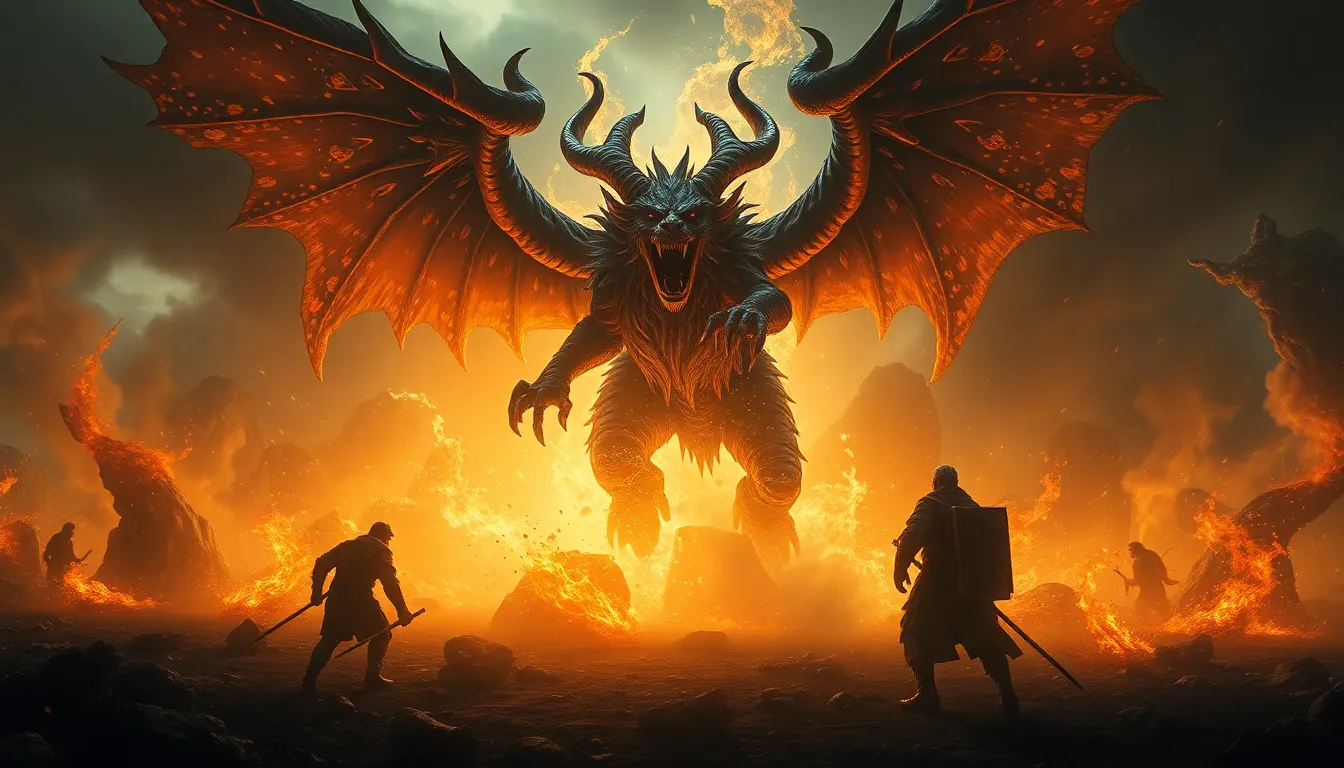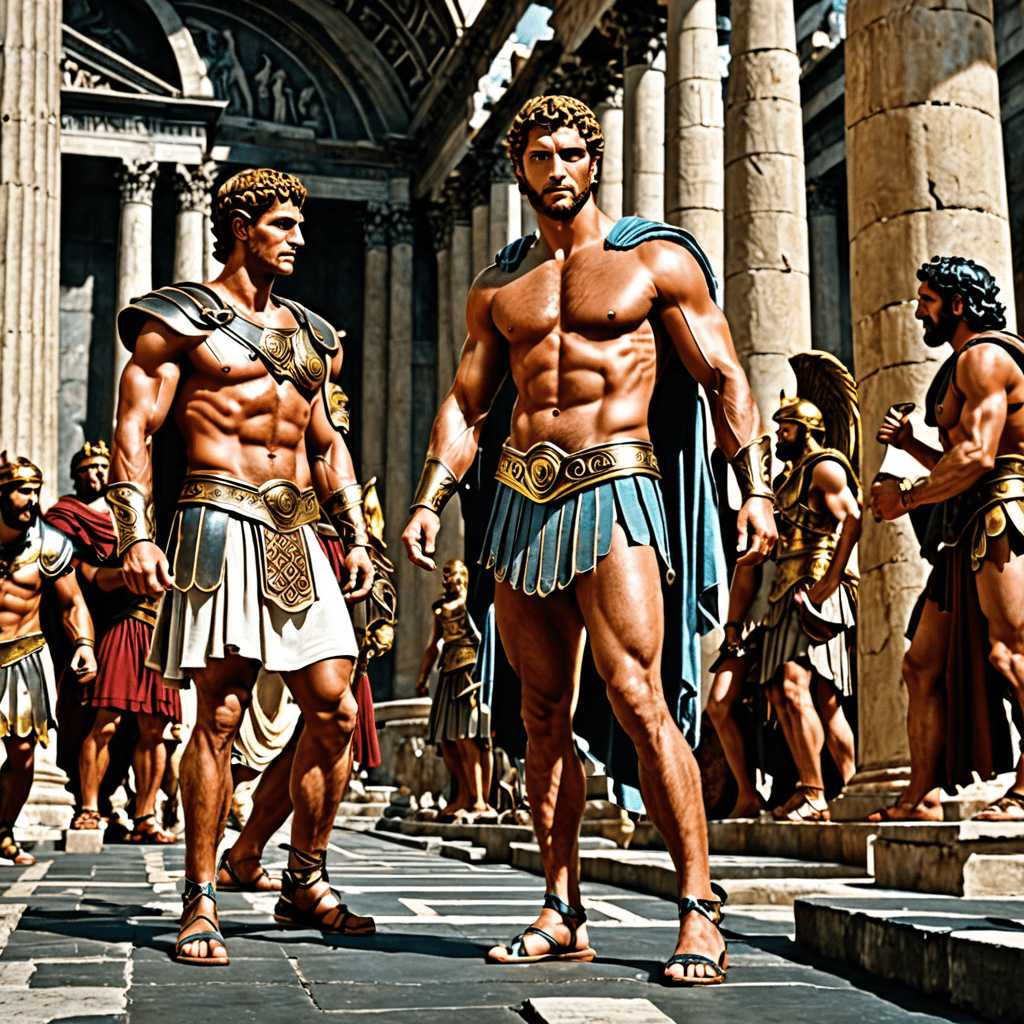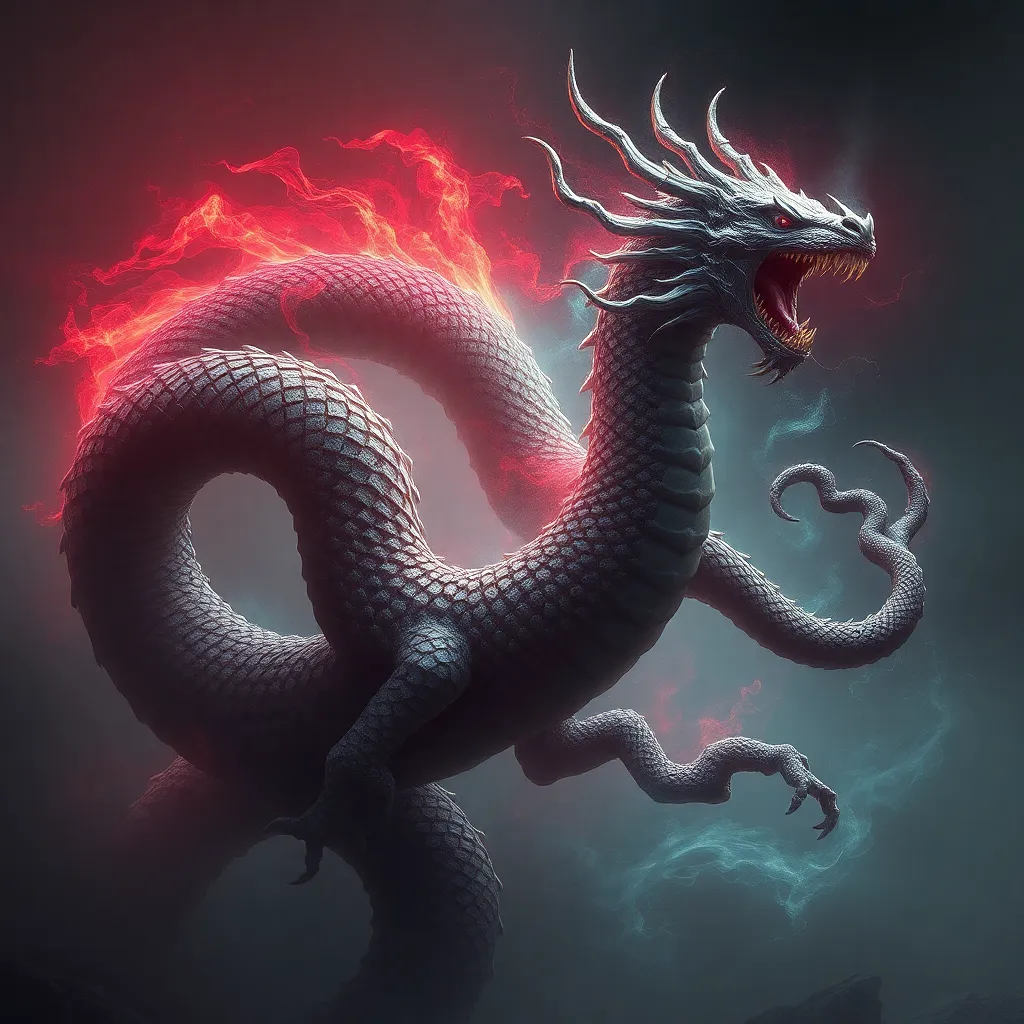The Myth of the Cosmic Ocean: Tiamat and Apsu in Mesopotamian Cosmology
1. Tiamat and Apsu: The Primordial Deities
In the beginning, when the universe was yet unformed, there existed only two primordial deities: Tiamat, the goddess of saltwater, and Apsu, the god of freshwater. They were the embodiment of the cosmic ocean, a vast and boundless expanse from which all creation would spring.
Tiamat, whose name translates to "the sea," was a fearsome and powerful deity. She was depicted as a monstrous serpent with a gaping maw and sharp claws, capable of churning the waters into a tempestuous frenzy. Apsu, on the other hand, was a more placid and benevolent figure, representing the life-giving properties of water. Together, they symbolized the primal forces of chaos and order that were present at the dawn of existence.
2. The Enuma Elish: A Babylonian Creation Myth
The story of Tiamat and Apsu is recounted in the Enuma Elish, a Babylonian creation myth that dates back to the 18th century BC. This epic poem tells the tale of how the world came into being from the primordial chaos of the cosmic ocean. The narrative begins with the union of Tiamat and Apsu, which gives rise to a younger generation of gods.
3. The Birth of the Gods from the Cosmic Ocean
From the union of Tiamat and Apsu, a multitude of deities were born. Among them were the gods Lahmu and Lahamu, who represented the heavens, and Anshar and Kishar, who represented the earth. These younger gods, however, proved to be disruptive and noisy, disturbing the peace of Tiamat and Apsu.
4. The Primeval Struggle: Apsu vs. Tiamat
Apsu, enraged by the constant commotion, decided to destroy the younger gods. He plotted with Tiamat to wipe them out, but their plan was overheard by Ea, one of the younger gods. Ea warned his fellow deities of the impending danger, and together they devised a plan to thwart Apsu's intentions.
5. Marduk: The Champion of the Gods
The younger gods chose Marduk, a powerful warrior god, to confront Apsu. In a fierce battle, Marduk defeated and killed Apsu, effectively ending his reign over the cosmic ocean. With Apsu's demise, Tiamat became the sole ruler of the primordial chaos, and she vowed to avenge her fallen consort.
6. The Defeat and Dismemberment of Tiamat
Fueled by rage and vengeance, Tiamat gathered a vast army of monstrous creatures and challenged the younger gods to battle. The ensuing conflict was epic and devastating, with the very fabric of reality threatened by the forces of chaos and order. Marduk, once again, emerged as the champion of the gods, leading them against Tiamat and her monstrous hordes.
In a fierce and brutal clash, Marduk faced off against Tiamat, wielding the winds and storms as his weapons. He unleashed a torrent of fury upon the goddess, tearing her apart with his divine might. With Tiamat's defeat, the cosmic ocean was subdued, and the forces of chaos were vanquished.
7. The Creation of the Heavens and the Earth
Following his victory over Tiamat, Marduk set about creating the heavens and the earth. He used Tiamat's corpse to form the sky and the earth, while her eyes became the source of the Tigris and Euphrates rivers. From the blood of Tiamat's slain monsters, he created humanity, forever linking their fate to the cosmic battle that had transpired.
8. The Cosmic Order and the Role of Humans
The Enuma Elish presents a complex view of the cosmic order and the role of humans within it. The gods are portrayed as powerful and often capricious beings, but they are also responsible for maintaining order and ensuring the continued existence of the world. Humans, created from the blood of Tiamat, are seen as both vulnerable and resilient, burdened with the knowledge of their monstrous origins.
9. Symbolism and Interpretation of the Myth
The myth of Tiamat and Apsu carries deep symbolic meaning, reflecting the ancient Mesopotamians' understanding of the world and their place within it. The primordial chaos and the cosmic ocean represent the unformed potential of the universe, while the birth of the gods and the creation of the heavens and the earth symbolize the emergence of order and structure. The battle between Marduk and Tiamat can be interpreted as a representation of the ongoing struggle between order and chaos, a struggle that continues to shape the world today.
10. Tiamat and Apsu in Modern Culture and Literature
The myth of Tiamat and Apsu has had a lasting impact on human culture and imagination. The image of the primordial goddess has inspired artists, writers, and filmmakers for centuries. Tiamat appears in numerous works of fiction, including fantasy novels, video games, and role-playing games. Her story continues to resonate with audiences today, reminding us of the power of chaos and the importance of order in shaping our world.
FAQ
What is the significance of the cosmic ocean in Mesopotamian mythology?
The cosmic ocean is a symbol of the primordial chaos from which all creation springs. It is also a source of life and fertility, as well as a place of potential danger and destruction.
What are some of the key themes of the Enuma Elish?
The Enuma Elish explores themes of creation, order versus chaos, and the relationship between gods and humans. It also provides insights into the Mesopotamian worldview and their understanding of the cosmos.
How has the myth of Tiamat and Apsu influenced modern culture?
The myth of Tiamat and Apsu has inspired artists, writers, and filmmakers for centuries. The image of Tiamat has appeared in numerous works of fiction, including fantasy novels, video games, and role-playing games. Her story continues to resonate with audiences today, reminding us of the power of chaos and the importance of order in shaping our world.



